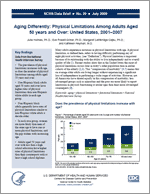NCHS Data Briefs

Data Brief, No. 312. Describing the Increase in Preterm Births in the United States, 2014–2016.
This data brief describes trends in total, early (less than 34 weeks), and late (34–36 weeks) preterm births by plurality, race and Hispanic origin of the mother, and state of residence during 2014–2016. The incidence of preterm birth in the United States rose from the early 1980s through 2006 but declined from 2007 through 2014. Recent data for 2014–2016, however, indicate that the preterm rate is on the rise again. The rise in preterm births in the United States for 2014 through 2016 largely reflects an increase among late preterm births, and more specifically, among births delivered at 36 weeks; the small change in the rate of early preterm births (2.75%–2.76%) was not statistically significant. The increase in late preterm births occurred among several groups, including both singleton and multiple deliveries and among each of the three largest race and Hispanic-origin groups. An earlier report demonstrated that late preterm rates also increased among women of all age groups during this period. Although the rate of early preterm births, the infants at greater risk of poor outcomes, was essentially stable among all births for 2014 through 2016, rates increased among infants born in singleton deliveries and among births to non-Hispanic black mothers. The latest provisional information from the National Center for Health Statistics Rapid Release program shows a continuing increase in total and late preterm birth rates and a stable early preterm birth rate for all births through 2017. Data from the 2014–2016 Natality Data File from the National Vital Statistics System (NVSS) were used for these analyses.





















.png)









No hay comentarios:
Publicar un comentario